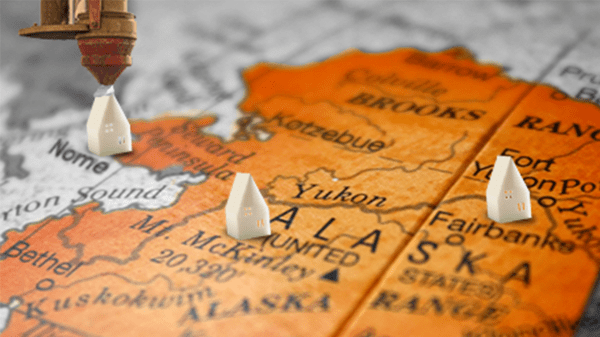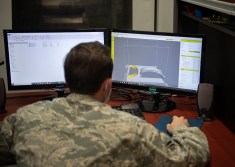3-D printing: The future of biomedical learning
Forget textbook diagrams: What if scientists of the future could explore every nook and cranny of a virus by holding a 3-D model of one in their hands?
That vision was the genesis for the National Institutes of Health 3D Print Exchange, a repository of downloadable and printable 3-D biomedical models housed in the National Institute of Allergy and Infectious Diseases, and the first 3-D printing lab in the federal government. The team’s belief is that physically interacting with a 3-D model adds much more depth and detail than a digital projection.
“You can look at something on a screen and sort of rotate it and see different aspects of it, but when you hold the print in your hand, there is much more information to be gained from that,” said Meghan Coakley, project lead for the NIH 3D Print Exchange, which won the Department of Health and Human Services’ HHS Innovates Secretary’s Pick award earlier this year.

A 3-D printout of the influenza virus’ hemagglutinin. (Coakley)
What started as a personal project of Darrell Hurt, a former computational biologist and former exchange lead, to help him better understand the molecules — like the influenza virus’ hemagglutinin receptor — he was studying became an open source, collaborative effort with the advance of personal desktop 3-D printers in the last few years.
“Wouldn’t it be great if more people could get access to this?” Coakley said.
Because companies like MakerBot were beginning to mass produce home 3-D printers, they decided to curate a database of microscopic molecules like proteins, bacteria and viruses that academics, scientists or even the curious layman could print from home.
“In seconds to minutes you can get several different versions of 3-D printable structures of a molecule,” the project lead said. To date, there are thousands of models available for download, submitted by the team and independent users.
And the idea continues to snowball. Models of molecules were only the beginning. Today users can find models of hearts, lab equipment and prosthetics.
Coakley said doctors have found that using “3-D models for surgical planning is incredibly valuable.” Looking at a 3-D model of a child’s actual heart instead of an MRI, “they’d go, ‘Oh, wow, I didn’t even realize there was another hole in the heart there,’” she said. The exchange has a special Heart Library collection so doctors can share and educate one another on the use.
There’s also a prosthetics special collection curated by the organization e-NABLE, dedicated to producing printable models of DIY prosthetics for children. Instead of having to buy costly, new prosthetics every time a kid grows, Coakley said, a caregiver can print one for them. But usually the models are scattered around the Web.
“What we want to do is help them bring them into one place and help people find them a bit better,” she said, adding that there’s a huge potential for this kind of DIY prosthetics. Her team worked recently with the Department of Veterans Affairs on a similar initiative to help veterans who need prosthetics or assistive technologies.
Surprisingly, if anything is holding back this 3-D movement, Coakley said, it’s the lack of things to print, not the lack of machines. For instance, MakerBot promoted an initiative with the White House to get 3-D printers in schools.
“We had talked to different teachers who said, ‘Yeah, we have this printer, but we don’t know what to do with it,’” Coakley said. But in the long term, she said it’s her team’s goal to promote the application of 3-D printing and the corresponding learning by hosting the exchange.






